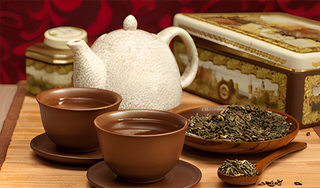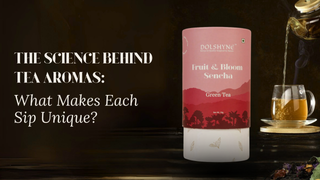Tea is far more than just a warm, comforting drink—it’s an experience defined as much by aroma as by taste. The fragrance is the first thing that greets us and the last essence to linger, making every sip memorable. But what truly makes one tea smell fresh and floral, another deep and smoky, and others sweet or fruity? The answer lies in the fascinating science of tea aromas, where nature and craftsmanship combine to create something extraordinary.
What Makes Tea Aromas So Distinct?
It often surprises people to learn that most of what we think of as “taste” actually comes from aroma. In fact, studies suggest that nearly 80% of flavor perception is influenced by what we smell. This is why even before sipping, inhaling the aroma of steeping tea tells us so much about what’s about to unfold.
Each tea leaf contains tiny natural compounds that are released when it is brewed. These aroma-carrying molecules rise with the steam, reaching our senses and shaping how we experience flavor. That’s why teas can feel grassy, floral, earthy, or fruity—depending on which natural compounds are most pronounced in the infusion.
How Processing Shapes the Aroma?
While the leaf’s origin matters, the way tea is processed is the true turning point that defines its aroma. Every traditional step taken after harvest unlocks something unique.
-
Oxidation: This step determines how bold or light a tea’s scent will be. Green teas undergo very little oxidation, which allows them to stay fresh and vegetal, while black teas are fully oxidized, developing deeper, malty, and sometimes fruity notes.
-
Drying & Firing: This locks in the aroma and ensures the tea doesn’t lose its delicate fragrance. It’s why floral white teas remain so light and why roasted oolongs carry those toasty, nutty hints.
-
Fermentation & Aging: Certain specialty teas are left to mature, allowing natural changes to bring out earthy, layered aromas with surprising complexity.
In essence, the journey from leaf to final cup is one of careful craftsmanship, where producers fine-tune how much of each aromatic quality is encouraged or preserved.
Brewing: Unlocking the Aromas in Your Cup
Even the finest tea needs the right brewing conditions to truly express itself. The way you brew directly influences which aromas rise from the cup.
-
Water Temperature: If the water is too hot, delicate notes can vanish; if it’s too cold, they never unfold fully. Green and white teas reveal their floral freshness at cooler temperatures, while black and oolong teas thrive in hotter water.
-
Steeping Time: Shorter steeps highlight lighter, more delicate fragrances, while longer steeps deepen aromas—though oversteeping may drown out subtlety with bitterness.
-
Mindful Brewing: Simply pausing to notice the first wafts of steam can enhance your enjoyment. That elegant shift from the initial burst of fragrance to lingering after-notes is the magic of tea aromas unfolding.
A Symphony of Aromas: Comparing Tea Families
Each tea family carries a distinct aromatic identity:
-
White Teas: Soft and delicate, often with floral whispers.
-
Green Teas: Crisp, fresh, grassy, with vibrant brightness.
-
Oolong Teas: Ranging from light, orchid-like aromas to richer, roasted and nutty scents, depending on the craft.
-
Black Teas: Bold, malty, fruity, and sometimes even chocolaty undertones.
-
Herbal Infusions: Carry their own natural profiles. Mint leaves add cool, sweet freshness, chamomile offers a gentle apple-like fragrance, and lemongrass brings uplifting citrus notes.
Why Aroma Elevates the Tea Experience?
The beauty of tea lies in how aroma guides not just taste, but the entire sensory experience. The fragrance interacts with the palate, giving teas a personality that can feel light and refreshing or bold and grounding. It’s one of the reasons why a tea is never just “pleasant”—it’s memorable.
When you sip consciously, every inhale of aroma and every layer of flavor feels like a quiet reminder that tea is both nature’s gift and human artistry combined.
Tea aromas are shaped by nature, refined by careful processing, and revealed fully through mindful brewing. Every cup holds within it a world of natural fragrances waiting to be discovered, each sip unfolding like a unique composition.
At Dolshyne, this delicate balance of aroma and taste is at the heart of our craft. Our blends are thoughtfully curated to capture nature’s most exquisite fragrances and deliver them beautifully in every cup. Explore our collection to savor the science of aroma, and discover how each cup can be as unique as its scent.




